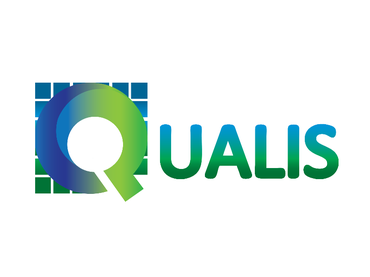Ethnomathematics and Native Language in Teacher Education with Indigenous Peoples
Visualizações: 287DOI:
https://doi.org/10.56579/rei.v6i3.1530Keywords:
Indigenous Ethnomathematics, Cultural Diversity, Bilingualism/Multilingualism, Teaching, LearningAbstract
The Ethnomathematics Program investigates the nature of mathematical knowledge in its historical, political, epistemological, conceptual, cognitive, and educational dimensions. Recognizing and valuing the knowledge and practices of different ethnic groups are sine qua non conditions for research in the field of Indigenous Teacher Education. This article aims to discuss the educational dimension of Ethnomathematics from the perspective of Indigenous teacher training. The theoretical framework is based on Ethnomathematics as a research program. The methodology was conducted through a participatory qualitative research, centered on an activity that aims to establish the relationship between mathematical language and mother tongue. The results indicate contributions to the teaching and learning of mathematics from a bilingual/multilingual, intercultural, community-based, and self-determination perspective; and reveal praxis in the initial training of teachers related to dynamic curricula, the dialogue of knowledge, and pedagogical strategies inspired by Indigenous sociocultural diversity. It concludes that the educational dimension of Ethnomathematics presents a possibility for dialogue between scientific and ancestral knowledge in the production of school knowledge within traditional communities.
Downloads
References
BRANDÃO, C. R. (org.). Pesquisa participante. 5. ed. São Paulo: Brasiliense, 1985.
D’AMBROSIO, U. A dinâmica cultural no encontro do velho e do novo mundo. Eä - Journal of Medical Humanities & Social Studies of Science and Technology, Buenos Aires, v. 1, n. 1, p. 1-29, ago. 2009. Disponivel em: http://www.ea-journal.com/art/A-dinamica-cultural-no-encontro-Velho-Novo-Mundo.pdf?origin=publication_detail. Acesso em: 12 ago. 2019.
D’AMBROSIO, U. Etnomatemática: elo entre as tradições e a modernidade. 2. ed. Belo Horizonte: Autêntica, 2011. (Coleção Tendências em Educação Matemática).
D'AMBROSIO, U. Sociedade, cultura, matemática e seu ensino. Revista Educação e Pesquisa, São Paulo, v. 31, p. 99-120, 2005. DOI: https://doi.org/10.1590/S1517-97022005000100008
GALLOIS, D. T.; GRUPIONI, D. F. Povos indígenas no Amapá e norte do Pará: quem são, onde estão, quantos são, como vivem e o que pensam? São Paulo: Iepé, 2003.
HALL, S. The work of representation. In: HALL, S. (ed.). Representation: Cultural Representations and Signifying Practices. London: Sage Publications, 1997.
IEPÉ. INSTITUTO DE PESQUISA E FORMAÇÃO INDÍGENA. Áreas protegidas – Amapá e norte do Pará. 2016.
NERY, C. S. S. Formação Inicial de Professores(as) Indígenas em Diálogos Integradores de Aprendizagem na Objetivação Cultural. Tese (Doutorado em Educação e Ciências e Matemáticas) – Programa de Pós-Graduação em Educação em Ciências e Matemáticas, Universidade Federal do Pará, Belém, 2023.
NERY, C. S. S.; MENDES, I. A. A difícil arte de ser professor indígena: o ensino de matemática nos anos iniciais do ensino fundamental. Revista Interinstitucional Artes de Educar, Rio de Janeiro, v. 9, n. 1, p. 30-46, 2023. DOI: https://doi.org/10.12957/riae.2023.70480. Disponivel em: https://www.e-publicacoes.uerj.br/index.php/riae/article/view/70480. Acesso em: 22 mar. 2024. DOI: https://doi.org/10.12957/riae.2023.70480
NERY, C. S. S.; NERY, V. S. C. Saberes, experiências e desafios na formação de professores indígenas no Amapá. Sapiens, Carangola-MG, v. 2, n. 1, p. 154-165, jan./jun. 2020. Disponivel em: https://revista.uemg.br/index.php/sps/article/view/5092. Acesso em: 22 mar. 2024.
UNIVERSIDADE FEDERAL DO AMAPÁ. Projeto Pedagógico do Curso de Licenciatura Intercultural Indígena. UNIFAP, Oiapoque, AP, 2019.
VERGANI, T. Educação Etnomatemática: o que é? Natal: Flecha do Tempo, 2007.

Downloads
Published
How to Cite
Issue
Section
License
Copyright (c) 2024 Interdisciplinary Studies Journal

This work is licensed under a Creative Commons Attribution 4.0 International License.
The Journal of Interdisciplinary Studies adopts the Creative Commons Attribution 4.0 International License (CC BY 4.0), which allows for sharing and adapting the work, including for commercial purposes, provided proper attribution is given and the original publication in this journal is acknowledged.












